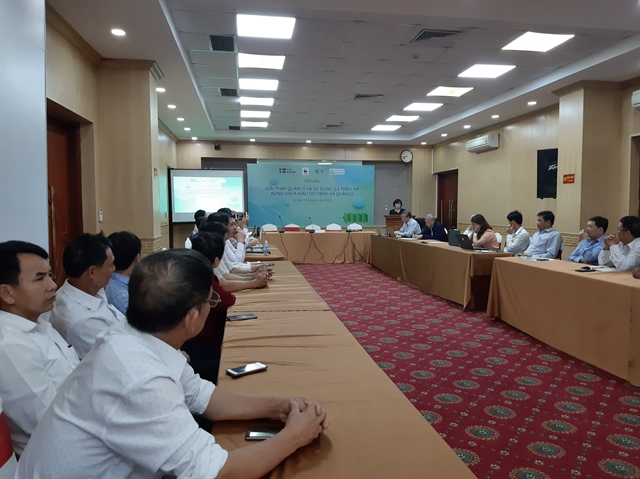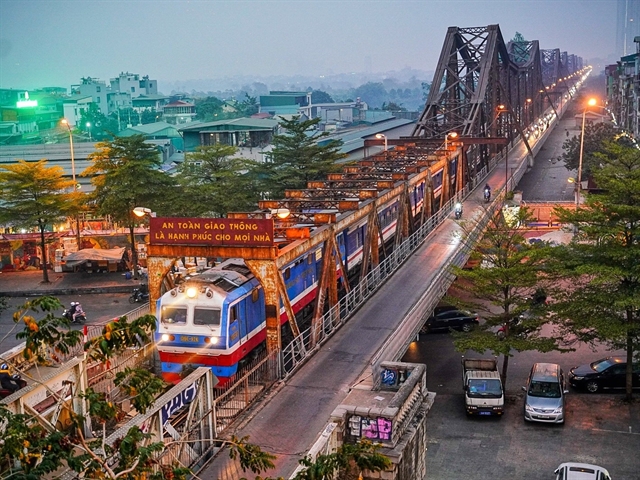 Environment
Environment

 |
| Experts and officials at a seminar on the use of unallocated forest land. — VNS Photo Tố Như |
HÀ NỘI — Việt Nam needs to develop and implement a programme to effectively manage and use forest land and forests which are temporarily managed by communes’ people's committees, said Assoc. Prof. Dr. Nguyễn Bá Ngãi, vice president and general secretary of Việt Nam Forest Association (VIFORA).
Currently, Việt Nam has more than 3.3 million hectares of forest and unallocated forest land which are temporarily managed by commune people's committees.
“This is an area with great potential for forestry development and socio-economic development in remote, ethnic minority areas in general,” Ngãi said at a seminar co-organised by VIFORA and the Centre for Education and Development (CED) on Monday (March 20) in Hà Nội.
Finding solutions to effectively manage and use the land area requires the participation of many agencies and sectors as well as large investment to make forests healthy not only in the present but also in the future, he said.
The forests and forest lands which are temporarily managed by the commune people's committees are of low quality, have poor infrastructure and are without forest records. The reason is that the committees do not have enough human and financial resources, and techniques for forest and forest land management.
The fact that the commune people's committees have managed a large area of forests and forest lands for a long time, but has not yet been assigned to local communities, individual households and other forest owners for management was because of the differences in land allocation responsibilities of the natural resources and environment sector and the forestry sector, Ngãi said.
So far, responsibilities between these two sectors are unclear, he said.
Meanwhile, the allocation of forests and forest lands to the community for management brings a lot of benefits, not only having a core forest protection force, but also helping people living near forests to improve their livelihoods and creating more motivation for them to participate in forest protection.
An example of the benefits from community forest management is the project "Strengthening the Role of Communities and Social Organisations in Conservation Work in the Central Trường Sơn Area" (known as LtC/SIDA Project) which was funded by the Swedish International Development Cooperation (SIDA) through WWF-Việt Nam.
After five years of implementation from January 2018 to December 2022, 30 communities and groups of households in districts of Nâm Đông and A Lưới of Thừa Thiên-Huế Province and Đông Giang District of Quảng Nam Province have been assigned to manage more than 7.8 million hectares of natural forest while 1,480 households are paid forest environmental services.
Up to 94 hectares of natural forest were enriched with rattan and ginger plants grown under the forest canopy and three hectares of black turmeric planted on households' land helped create livelihoods and motivated people to keep forests.
At the seminar, experts, managers and local authorities shared and discussed the situation of management and use of more than 3.3 million hectares.
Tô Thị Kim Liên, the CED director, said that the problem of unowned forests has existed for many years, while in fact thousands of households living in mountainous areas, including many ethnic minorities, are very short of productive land.
So, it is necessary to hand over the forests and forest lands to households, Liên said.
One of the important things is to ensure that the allocated forest land areas have real potential for use, generate livelihoods, and bring incomes to forest owners, she said.
Therefore, it is necessary to have the very active participation of many agencies and organisations to be able to come up with supporting initiatives and solutions.
Mechanisms should be in place for households to cooperate with businesses to invest in afforestation to create a supply chain of equality and mutual benefits, she added.
According to Ngãi, the establishment of a community forest management cooperative group is very important.
In addition, it is necessary to amend and supplement a number of regulations on forest and forest land allocation to residential communities as well as the use of special-use forests and cooperation in forest management, he said. — VNS




